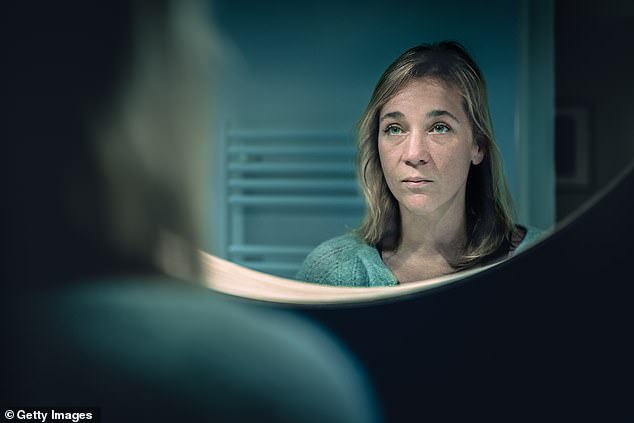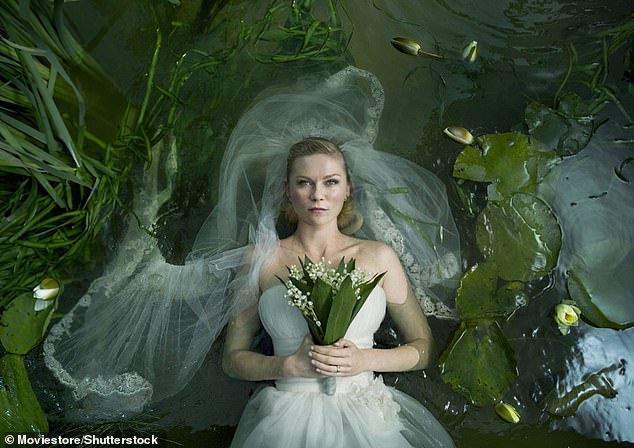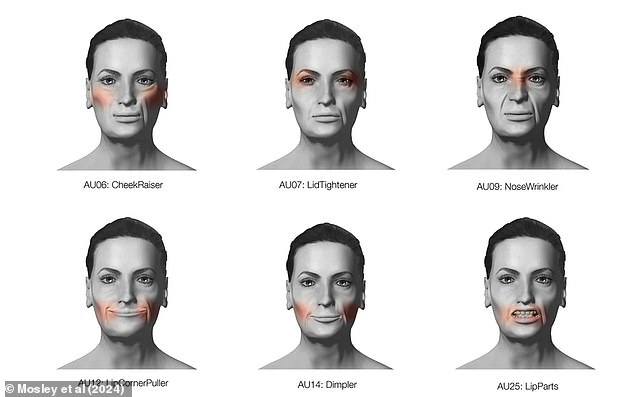Doctors may soon be able to diagnose a severe form of depression simply by looking at a person’s face.
This type of depression, called melancholy, is characterized by a complete loss of interest in daily activities and inability to respond to any pleasure, problems sleeping, slow movements, speech and thoughts, agitation, restlessness, body pains and problems concentrating.
According to researchers, between five and 10 percent of depressed people suffer from melancholy, which could represent up to 2 million Americans.
Now, a study has found that people with early-stage melancholy make different facial expressions when looking at certain material.
Those who suffer from this serious illness show little or no emotion on their faces when they see something. In contrast, people with regular depression were still able to laugh and get excited while watching funny videos.
Similarly, people with melancholy had less brain activity in regions responsible for producing emotions and some facial movements, suggesting that the way they feel emotions is blunted.
This could explain why some people with melancholy express a feeling of numbness and disinterest, because their emotions are diminished on a biological level.
The above representations show the six facial expressions that people with regular depression made while watching a funny video that people with melancholy did not make while watching any video.

When watching clips of happy and sad content, people with melancholy had no facial expressions. People with less severe depression still get emotional during funny scenes
Study author Dr. Philip Mosley said the study shows the biology behind what scholars have suspected since the time of the ancient Greeks: Some people’s depression causes them to develop real physical changes.
Dr. Mosley, a neuropsychiatrist at the QIMR Berghofer Medical Research Institute in Australia, told Science Alert: “So they stop eating, they lose the ability to sleep, they seem slowed down, like they’re walking on cement.” Their thinking speed is noticeably reduced and they are often very ill.’
The study, published in the journal Molecular psychiatryshowed 70 depressed people, 30 of whom had melancholy and 40 of whom did not, in two different videos.
The first video was a clip from Ricky Gervais’ comedy set ‘Animals’, which included funny parodies of nature documentaries.
The second video was a short film called ‘The Butterfly Circus’, which presents a moving story about a circus troupe that inspires hope in Depression-era America.
The researchers then recorded the participants’ brain and facial activity while they watched each movie, first using face-tracking machines and then using an MRI scanner.
The facial tracking machine revealed that no matter what content the melancholic people were watching, their facial muscles did not move.
They didn’t laugh, frown, or grimace. Their faces maintained a uniform expression throughout the test.
People with habitual depression, however, still laughed and smiled during Gervais’ clips.
Inside the MRI machine, the participants’ brains revealed a similar story.
Dr. Mosley said of people with melancholy: “Those emotional regions of the brain, the ones involved in detecting and responding to stimuli with an emotional tone, were just doing their thing, disconnected.”

The 2011 film Melancholia starred Kirsten Dunst as a woman with the disease. In him, his depression causes an intense feeling of apathy and emptiness, which at first he finds it difficult to cope with.
This was particularly visible in a region of the brain called the cerebellum, a ball-shaped structure found near the area of the head where the spine connects to the brain.
The cerebellum is responsible for a number of automatic body functions, including balance, eye movement, and some emotions. People with melancholy had less brain activity here and, consequently, less emotional faces when watching either video.
Dr Mosley said raising awareness of this lack of emotion could help doctors differentiate between melancholia and normal depression sooner, and although melancholia is a more serious condition, it is still treatable.
These patients don’t tend to respond well to traditional talk therapy, so diagnosing them early could also help establish a more personalized treatment plan for them, Dr. Mosley suggested.
If a person with this condition is diagnosed early, Dr. Mosley said most respond very well to medications, which work to balance brain chemistry.
And faster treatment can help them avoid more invasive therapies that may be necessary if the condition has progressed.
These include electroconvulsive therapy, which uses an electrical current to induce a brief seizure and change brain chemistry to improve symptoms, and transcranial magnetic stimulation, which uses magnetic pulses to stimulate certain areas of the brain to improve symptoms of depressive conditions. older.

